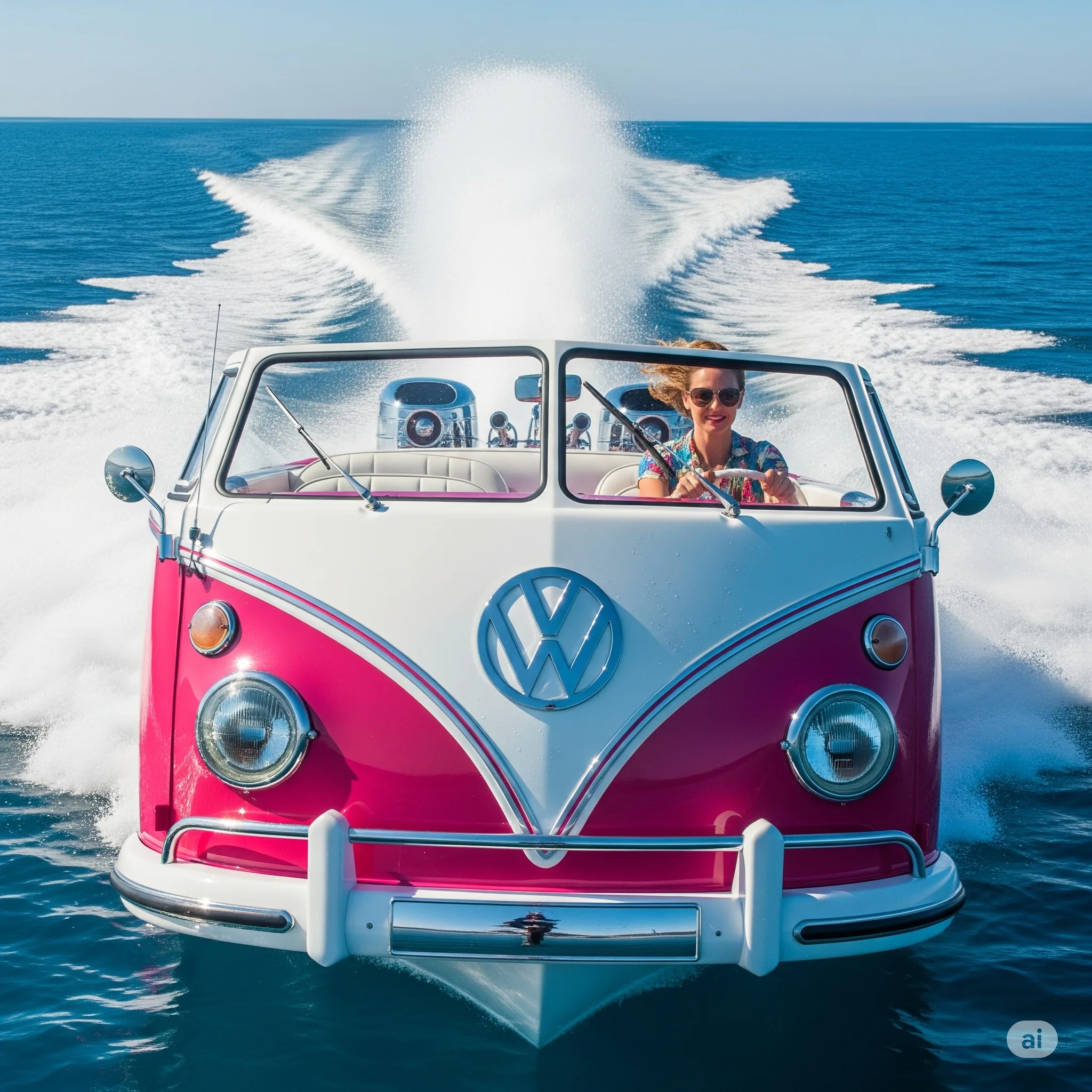There are some designs that never fade from memory. For Americans who grew up during the 1960s and 1970s, the Volkswagen Bus was more than a vehicle. It was a companion on road trips, a symbol of freedom, a cultural touchstone for an entire generation. The rounded edges, the wide front windshield, the quirky charm, all carried with them the promise of music, friendship, and discovery. Today, that spirit has resurfaced in a way that few could have imagined: as a jet ski. The VW Bus-Shaped Jet Ski takes the beloved lines of a cultural icon and reshapes them for the water, merging nostalgia with the thrill of speed.
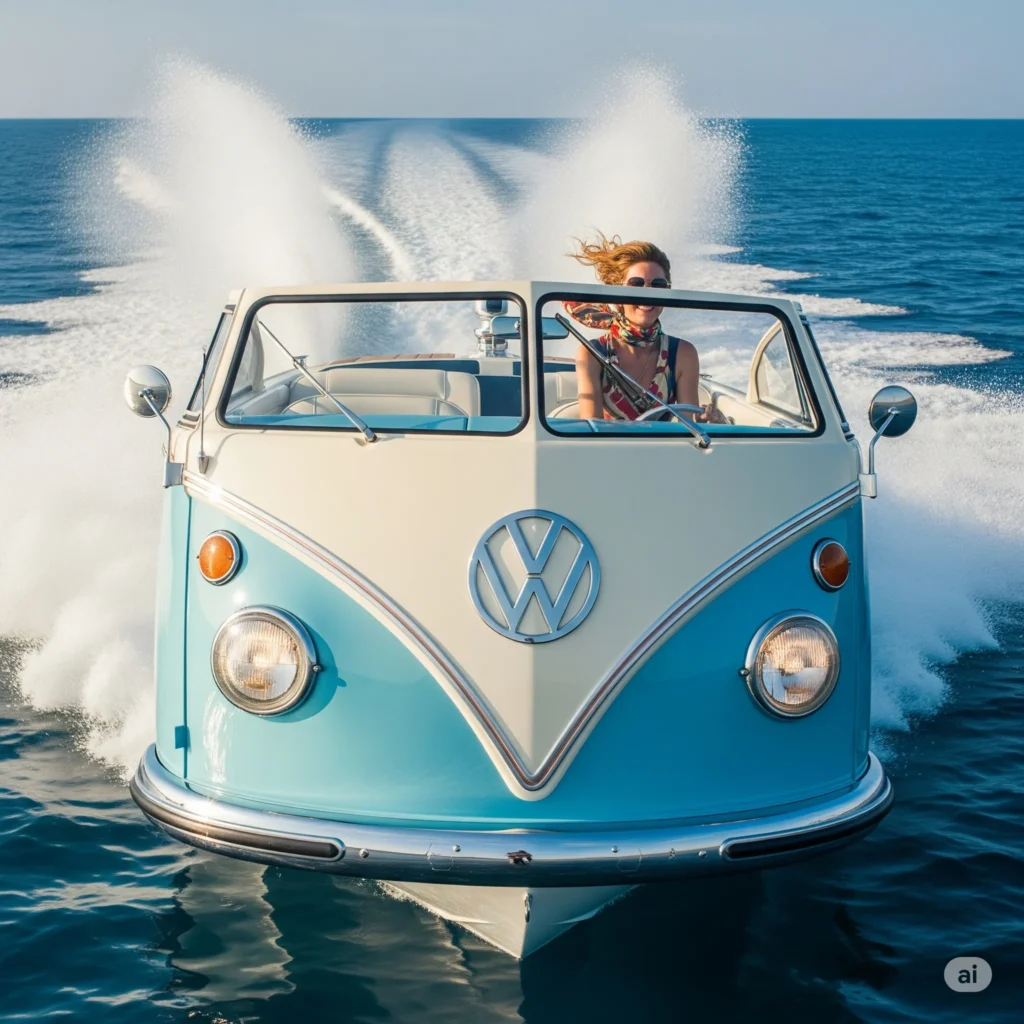
For a generation that once loaded surfboards onto the roof of a VW Bus and headed to the coast, the idea of climbing onto a watercraft designed to look like the same vehicle brings back a flood of memories. Yet it is not only about the past. It is about rediscovering freedom in the present, about enjoying the water in a form that blends fun and identity. The VW Bus-Shaped Jet Ski is playful, yes, but also serious in its craftsmanship, its engineering, and its ability to spark joy in anyone who encounters it.
The Origins and Inspiration Behind the VW Bus-Shaped Jet Ski
The idea of a VW Bus on water did not appear overnight. It came from a long history of admiration for the Bus itself. The Volkswagen Type 2, affectionately known simply as the Bus, was introduced in the late 1940s and quickly became associated with counterculture movements, surf culture, and the spirit of exploration. People personalized their Buses with paint, stickers, curtains, and accessories. It was never just a car; it was a statement.
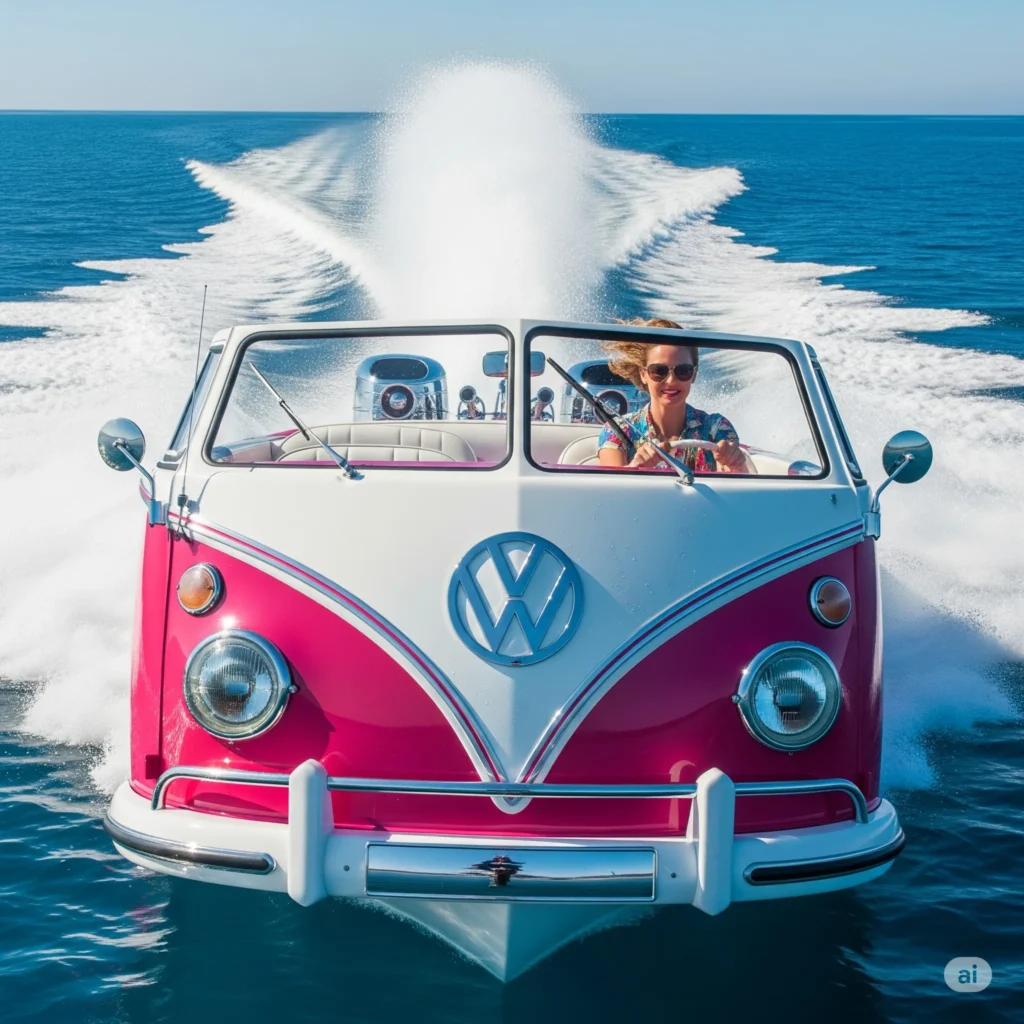
As decades passed, enthusiasts sought ways to keep the legacy alive. Restorations became common, custom builds appeared, and the Bus retained a strong presence at car shows and coastal festivals. At the same time, water recreation was evolving. Jet skis had been around since the 1970s, offering speed and thrills on lakes and oceans. They were fast, compact, and functional, but lacked the character and personality that made the VW Bus so memorable.
The VW Bus-Shaped Jet Ski was born from the intersection of these two passions. Designers and craftsmen saw an opportunity to merge nostalgia with water sports. The Bus could be reborn not only as a restored vehicle for roads but also as a watercraft that turned heads wherever it went. It was not about creating the fastest machine. It was about creating one that carried a story, one that made riders smile the moment they stepped onto it.
The inspiration also came from culture itself. The VW Bus had always been tied to water in spirit, whether parked at a beachside lot or hauling boards to a surf competition. Reimagining it as a jet ski felt natural, almost inevitable. It was a way of letting the Bus return to the shoreline, not just as a parked car but as an active part of the waves.
Craftsmanship, Engineering, and Design Excellence
Though whimsical in appearance, the VW Bus-Shaped Jet Ski is an achievement of design. Builders had to reconcile the classic silhouette with the demands of hydrodynamics. The Bus is a boxy shape, but on water, performance depends on smooth lines and efficient flow. To solve this, fiberglass molds were shaped with precision, maintaining the recognizable outline while adjusting proportions to glide through waves.
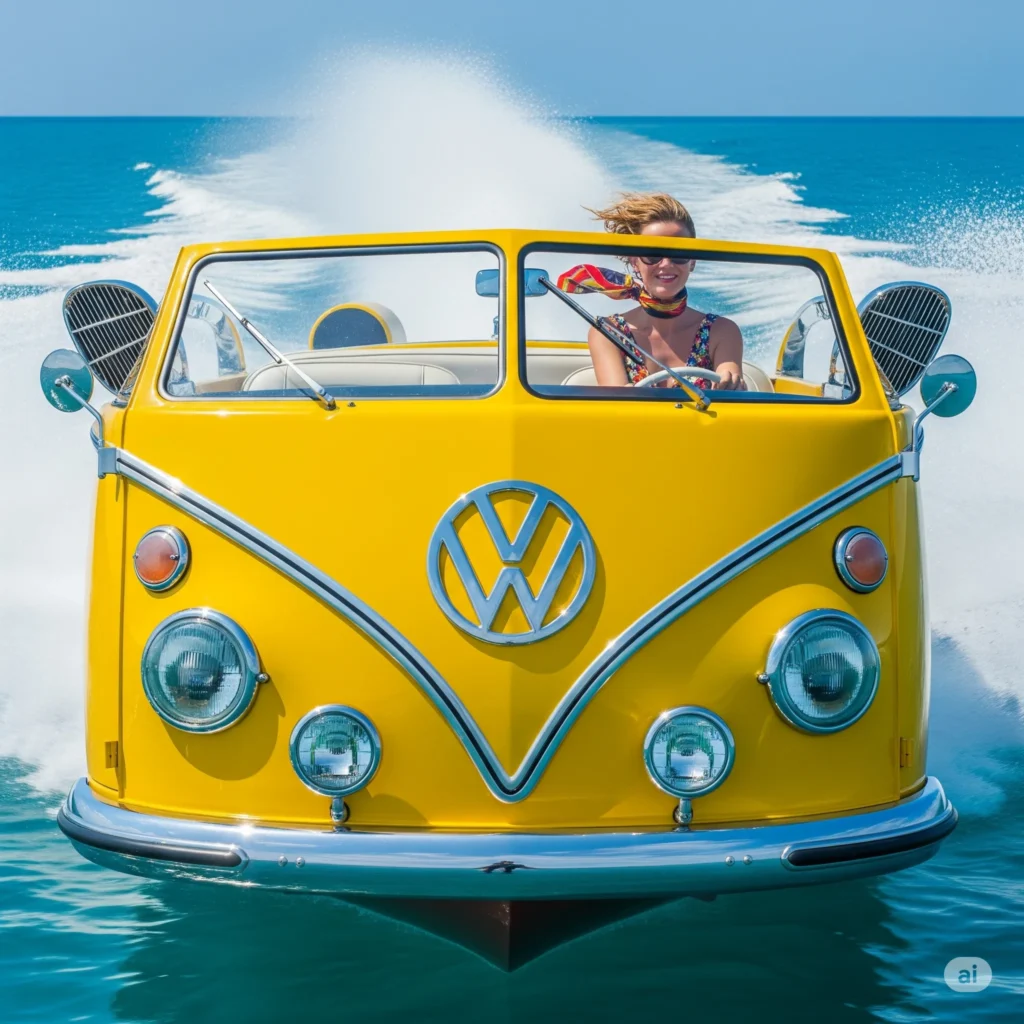
The iconic face of the Bus was preserved: the V-shaped front, round headlights, and distinctive trim. These details were not simply cosmetic but were balanced with engineering considerations to avoid drag. Beneath the shell lay a powerful jet propulsion system, comparable to high-end jet skis, giving the watercraft not only presence but also performance.
Balance was one of the greatest challenges. The VW Bus-Shaped Jet Ski is larger and taller than a typical personal watercraft. Engineers had to lower the center of gravity, distribute weight evenly, and fine-tune steering systems to ensure safe handling. The result was a craft that rode confidently across lakes and coastal waters, playful in design but serious in control.
Attention to detail extended beyond performance. Two-tone paint jobs echoed the cheerful palettes of vintage Buses. Chrome finishes, roof rack imitations, and surfboard props gave each piece character. Inside, seating was designed for comfort, evoking the bench-like simplicity of the original. Customization became part of the appeal, just as it had been with the road version. Owners could choose colors, accents, and finishes that made their jet ski as unique as their memories.
This craftsmanship shows that design can be both nostalgic and innovative. It is not simply a toy or a parody but a true fusion of artistry and engineering. Each VW Bus-Shaped Jet Ski stands as a reminder that our cultural icons can evolve without losing their soul.
Experiencing the Ride — What It Feels Like on the Water
Climbing onto a VW Bus-Shaped Jet Ski is unlike stepping onto any other watercraft. At first, there is surprise. The familiar shape of the Bus, now floating, is both humorous and moving. It triggers memories before the engine even starts. Then, with a turn of the throttle, nostalgia transforms into exhilaration.
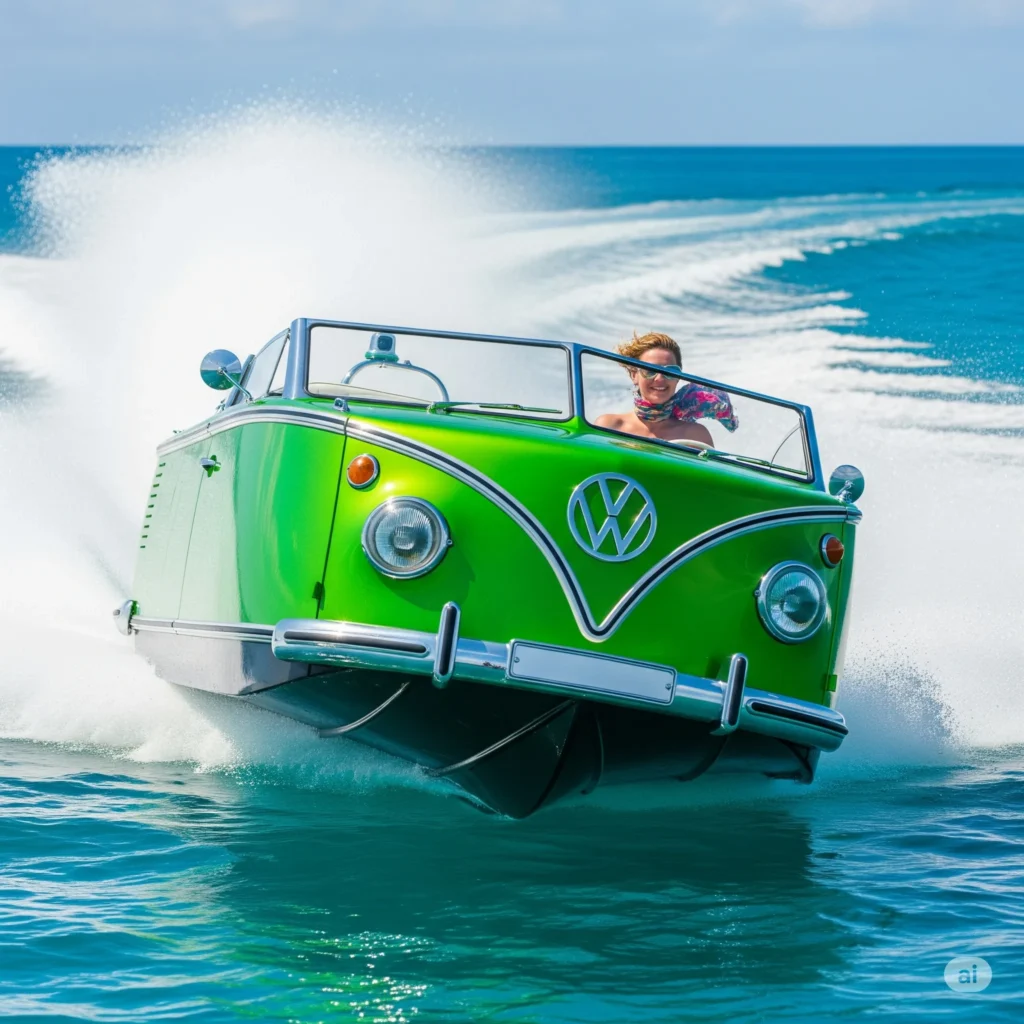
The ride itself is smooth, steady, and surprisingly agile. Despite its unusual shape, the jet ski responds confidently to steering. It glides across calm waters with ease, its broader body providing a feeling of stability. For older riders who may prefer comfort over extreme thrills, this is an advantage. It is less about racing across the waves and more about enjoying the journey, the scenery, and the laughter it inspires in those who watch.
The sensory experience is layered. The engine hum recalls the mechanical life of vehicles, yet the spray of water and the rush of wind root the rider firmly in the present. There is something liberating about piloting a cultural icon across open water. It feels playful, youthful, and empowering. For those who once traveled the highways in a VW Bus, it feels like the adventure has simply shifted terrains — the road has become the lake, the ocean, the river.
Spectators often react with amazement. Wherever it goes, the VW Bus-Shaped Jet Ski draws attention. Families on docks, children on beaches, and fellow boaters all stop to watch, wave, and smile. It is impossible not to feel the joy of being at the center of such reactions. The ride is not only about personal enjoyment but about sharing happiness with others.
Cultural Significance and Nostalgia in America
The VW Bus has always carried cultural meaning in America. It symbolized rebellion, freedom, family, and travel. It represented the 1960s counterculture, surf movements in California, and countless stories of exploration. That symbolism has not faded. Even today, the Bus appears on posters, in movies, and in restored glory at car shows. It stands for a certain spirit of life — one that values experiences over possessions, journeys over destinations.
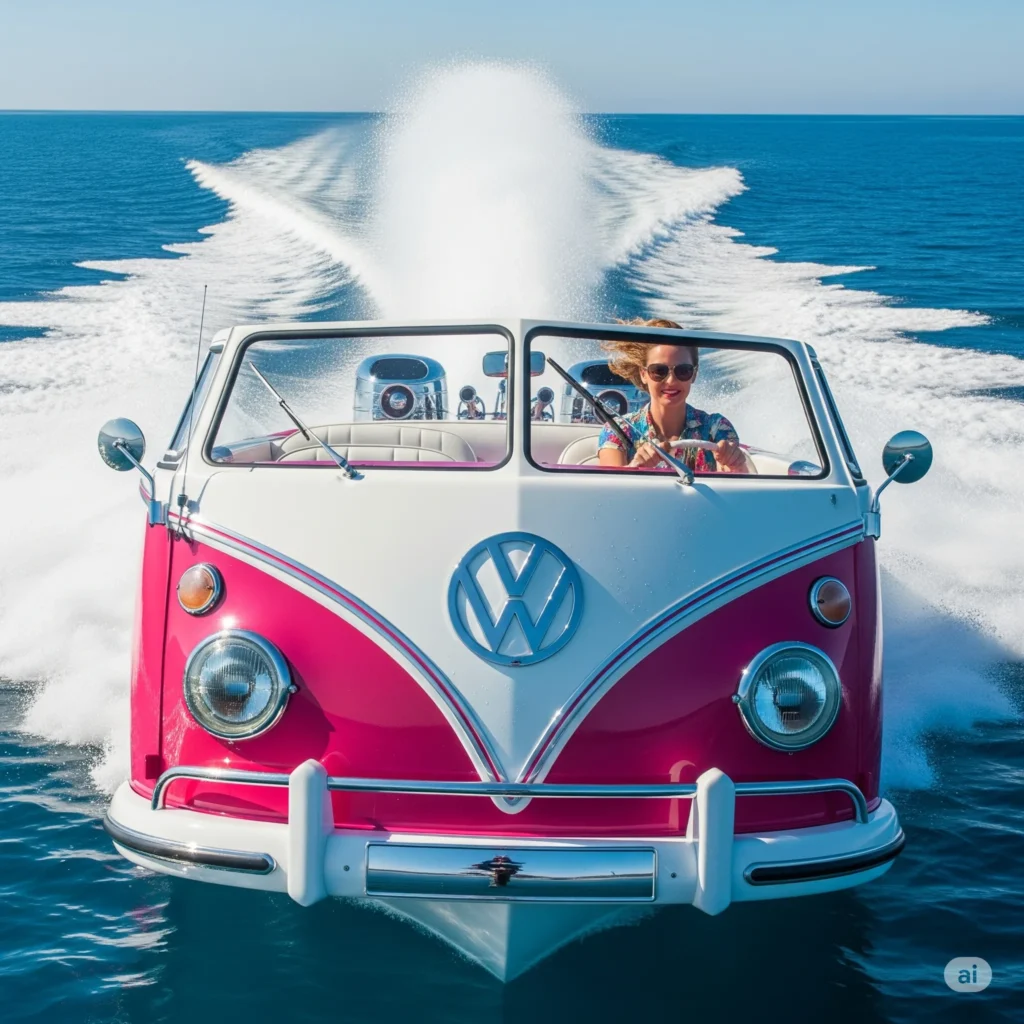
By reshaping the Bus into a jet ski, builders tapped into this cultural reservoir. The VW Bus-Shaped Jet Ski is not only a watercraft. It is a statement piece that bridges generations. Older Americans see it and feel a wave of nostalgia. Younger onlookers, even without personal memories of the Bus era, recognize its charm and fun. It brings people together, creating conversations across age groups and backgrounds.
In many ways, it also reflects the evolving nature of leisure in America. Where once the open road was the ultimate expression of freedom, today the open water holds similar allure. The VW Bus-Shaped Jet Ski acknowledges this shift while keeping the emotional heart intact. It allows Americans to continue celebrating the values of exploration and individuality, just in a new environment.
This cultural significance is why the VW Bus-Shaped Jet Ski has captured so much attention. It is not about speed records or technical superiority. It is about what it represents: the blending of past and present, the joy of reliving memories in a playful and tangible way, and the idea that symbols of freedom can adapt to new generations without losing their essence.
The Future of Nostalgic Recreational Vehicles
The VW Bus-Shaped Jet Ski is not an isolated creation. It is part of a larger trend where nostalgia meets modern recreation. Across America, people are seeking ways to relive the past while enjoying the conveniences and excitement of the present. From retro-styled campers to vintage-inspired bicycles, the desire to connect with memory is powerful.
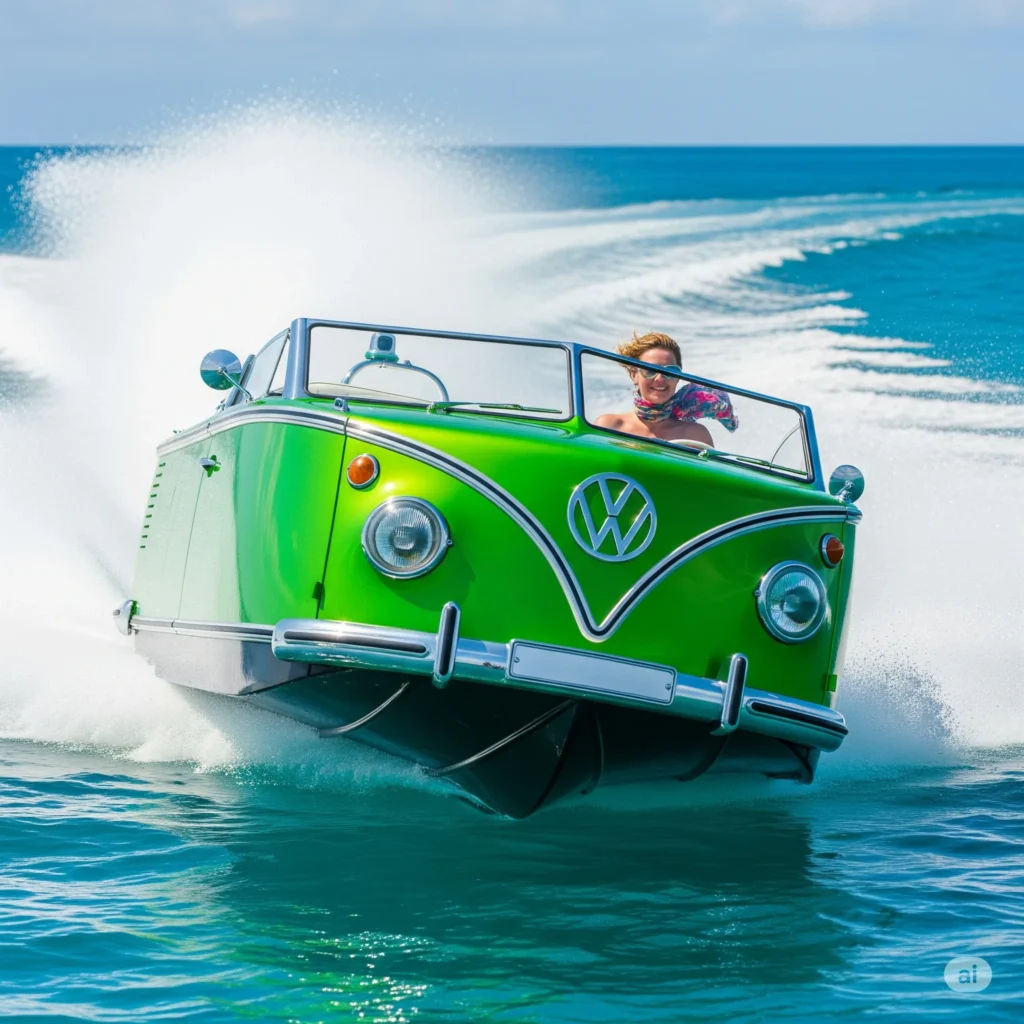
The future of nostalgic recreational vehicles seems bright. The VW Bus-Shaped Jet Ski may inspire similar creations, blending iconic designs with contemporary performance. Imagine classic car shapes reborn as boats, motorcycles, or even electric scooters. The principle is the same: take something people already love, give it a new context, and watch as joy multiplies.
For the VW Bus in particular, the possibilities are vast. Its shape, story, and symbolism are so strong that it can be adapted again and again. Whether as an electric van for city streets or as a playful jet ski for lakes, the Bus carries timeless appeal. The VW Bus-Shaped Jet Ski proves that innovation does not always mean abandoning tradition. Sometimes it means carrying it forward, onto new roads and into new waters.
Conclusion — Why the VW Bus-Shaped Jet Ski Matters
At first glance, the VW Bus-Shaped Jet Ski might seem like a novelty, a humorous twist on a beloved vehicle. But look deeper and you see that it carries layers of meaning. It is a bridge between eras, a symbol of continuity in American leisure culture. It connects the spirit of the 1960s and 1970s with the possibilities of today, allowing people to relive their youth while creating new memories.
It matters because it reminds us that joy and design are intertwined. A machine can be functional, but when it also carries personality, it becomes something greater. The VW Bus-Shaped Jet Ski is not the fastest craft on the water, but it may be the most memorable. It turns heads, sparks conversations, and fills riders with a sense of freedom that transcends generations.
For Americans between forty-five and sixty-five, it is a gift of nostalgia. For younger generations, it is a playful introduction to an icon. For everyone, it is proof that the past can live on, not as something to preserve behind glass, but as something to ride, enjoy, and celebrate. In the end, the VW Bus-Shaped Jet Ski is more than a watercraft. It is a floating memory, a piece of cultural heritage reborn, and an open invitation to adventure.

